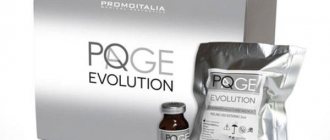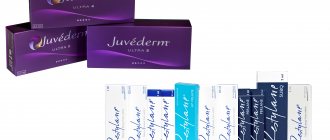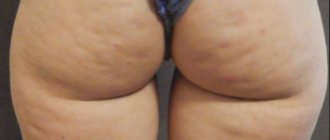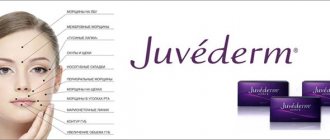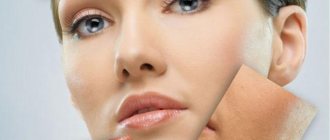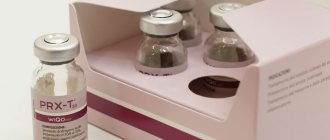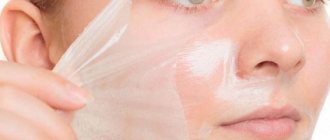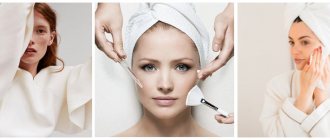Peeling is a cosmetic procedure based on the removal of dead upper layers of skin with the subsequent restoration of healthy young tissue. Historically, the so-called abrasive method was the first to emerge - cleansing took place with small solid particles (in fact, these are modern scrubs). However, new chemical techniques are more effective. One of them is pyruvic peeling, which not only cleanses the facial skin, but also normalizes pigment metabolism, helps strengthen the connective tissue base and reduces the activity of inflammatory processes.
What it is
Pyruvic or green peeling is a method of chemical cleansing of facial skin, which is based on the effect of pyruvic acid and its metabolic products.
This compound is also known as pyruvate and is found in fruits, wine, and honey. Therefore, experts often consider this procedure as a type of fruit peeling.
Buyanov Sergey Yurievich (Expert Doctor):
Pyruvate - pyruvic acid - serves as the initial and final link in the cycle of cellular respiration. Thus, the chemical compound is “well known” to any living organism. During the oxidation process, pyruvate, with the participation of oxygen, participates in energy metabolism with the formation of ATP molecules; in the absence of oxygen, it is converted into carbon dioxide and aldehyde. In relation to epidermal cells, pyruvate can play the role of an energy source, or act as a powerful oxidizing agent.
Usually in preparations the main substance is combined with lactic acid in various concentrations - this is necessary for use on different skin types. It has broad metabolic activity, participates in the metabolism of carbohydrates, fats and some pigments.
The small size of pyruvate molecules and their easy solubility in lipids promotes deep penetration of the acid into tissues - but despite this, the technique is superficial.
Efficiency
The main actions of pyruvic acid:
- Sebostatic - normalizes sebum production, thereby preventing seborrhea, acne and other oily skin problems.
- Comedolytic - the effect follows from the previous one. If local fat metabolism is normalized, the formation of comedones is reduced. And existing ones are destroyed due to a change in the consistency of the “black dot” substance.
- Bacteriostatic - pyruvate slows down the proliferation of bacteria, especially those that cause inflammation in acne and acne.
- Restructuring - refers to deep effects. Pyruvic acid, penetrating the dermis, activates the synthesis of collagen and elastic fibers, preventing their deformation. This procedure compares favorably with similar techniques (for example, salicylic peeling).
- Depigmenting - pyruvate is able to influence pigment metabolism, eliminating areas with excessive accumulation of melanin and other similar compounds. Thanks to this, spots and spots disappear.
- Exfoliating (one of the most important goals) is the removal of the upper skin flakes formed from dead cells.
Drugs
Manufacturers of cosmetic products offer a variety of products for pyruvic peeling.
They differ in the concentration of active ingredients, the absence or presence of auxiliary components and cost.
Many brands sell entire complexes for preparation for procedures and post-peeling care.
All drugs can be divided into three groups. Let's look at it in the table.
| Compound | Characteristics | |
| 1 | 40% pyruvate and 5% lactic acid (lactate) | Used for oily or combination skin. They fight most effectively against increased sebum production, acne and comedones. |
| 2 | 50% pyruvate and 5% lactate | A more concentrated solution, suitable for normal mature skin. Used to correct age-related changes (wrinkles, initial stages of gravitational ptosis) and pigment disorders. |
| 3 | 25% pyruvic acid and 25% lactate | They have a milder effect and are therefore used on sensitive or dark skin. The main indications are the fight against acne and photoaging processes. |
Buyanov Sergey Yurievich (Expert Doctor):
Lactate - lactic acid - is the next link in the chain of converting glucose into ATP molecules. In the presence of lactic acid, pyruvate metabolism always proceeds along the path of energy production, and not the relatively toxic aldehyde.
Popular brands
When choosing a particular brand, many factors should be taken into account: individual characteristics of the skin, the nature of the aesthetic problem and indications for use.
Also, when preparing for the procedure and during rehabilitation, it is advisable to use products from the same manufacturer - as a rule, they are better combined with each other.
Mediderma
The Italian brand produces a full line of chemical peels based on pyruvic acid for various skin types.
In addition, auxiliary products used for preparation for the procedure and subsequent care are very popular among cosmetologists. For example, Hydroaloe is recognized as one of the best drugs for relieving skin irritation after peeling.
- The products are highly effective in combination with a relatively low percentage of side effects.
- One of the downsides is the high cost, but it is compensated by the quality.
Christina
Country of origin: Israel.
The series is widely popular among both professionals and ordinary people. Almond peels are especially famous and are considered the best. But pyruvic acids are also of quite high quality.
The line includes only two or three types of product for normal and oily skin. However, with the right professional selection, they will have a high and powerful effect.
Tiande
Country of origin: Russia.
The products are intended for home use, so the concentration of active acids there is low to prevent negative reactions.
However, it is great for minor problems in mature or sensitive skin.
Kosmoteros
Pyruvic acid peeling 40% with pH 1.5 was released relatively recently.
Previous chemical products of other types (almond, glycolic peels) have shown their high effectiveness and reliability.
The only downside is the meager range (only one option with pyruvate), but in the hands of a professional this will be quite enough.
Martinex
The Russian company has existed for a quarter of a century and is known for its wonderful cosmetic products. Among them is peeling with pyruvic acid (40%), suitable for mature, normal and oily skin.
Some cosmetologists note that the line is more effective against age spots than similar products from competitors.
The undoubted advantage is the attractive price-quality ratio.
Other popular
Peeling preparations are also produced by Toscani Laboratories (Russia), Enerpel and Mesoderm (both Spain), Biomatrix (France).
Indications for use
Green peeling is a fairly versatile procedure and is therefore used for a wide range of cosmetic problems.
- Seborrhea and seborrheic dermatitis . A course of 10-12 procedures is required at intervals - once every 8-10 days. In the future, for maintenance - once every 1-1.5 months.
- Papulopustular form of acne 1-2 degrees and comedones . An intensive course is indicated with an interval between sessions of 7-10 days.
- Rosacea (pink acne) . Course duration is 8-10 procedures every 9-12 days. Afterwards they switch to maintenance use.
- Pigment disorders (hyperpigmentation) . Peeling is carried out once every 10-14 days, it is advisable to combine it with other depigmenting procedures to enhance the effect. It is better to carry out the course from October to April - at a time when the level of solar radiation is minimal.
- Aging skin: dark circles under the eyes, the appearance of the first wrinkles, decreased turgor and elasticity, symptoms of photoaging . To eliminate such problems, 10-12 sessions every 10-14 days are recommended. After which one procedure per month is prescribed. Intensive treatment is carried out 1-2 times a year.
The cosmetologist can make adjustments depending on the individual characteristics of the patient. In addition, you can alternate the treatment of zones - the first time on the face, the next time on the skin of the neck.
What kind of facial skin treatment is this?
Pyruvic peeling is a special cleansing procedure in which the base of the exfoliating mixture is pyruvic acid. This component does not cause allergic reactions, since it is synthesized in the cells of the human body.
Features and Properties
This procedure has the following effects on the skin:
- gently removes the upper cellular layer, due to the predominance of an acidic environment on the surface of the skin itself;
- starts the process of skin restoration with the help of building material for new cells;
- under the influence of chemical reactions, pyruvic acid is converted into lactic acid, which significantly improves complexion and removes many aesthetic imperfections.
This procedure is a superficial cosmetic procedure, since it does not affect the deeper layers of the skin. Due to its effects, this substance is considered a gentle remedy for working with aging, sensitive and dry skin.
The particularly beneficial properties of pyruvic acid include the restoration of bonds between hyaluronic acid and water molecules at the cellular level.
Efficiency
To achieve a lasting result, you need from 6 to 10 peeling sessions in a professional salon. In this case, you will see a lasting result that will last for more than one month. It is optimal to repeat this procedure at least once a year. As a result, it is possible to achieve the following indicators:
- reduce the level of pigmentation or completely whiten it;
- stabilize the functioning of the sebaceous glands;
- tighten pores;
- fight acne;
- reduce the number and depth of age and facial wrinkles;
- has a positive effect on skin tone, making it even;
- restore skin hydrobalance.
We recommend: Properties, features and types of body peeling. How is the procedure carried out in the salon and at home?
After the procedure, the oval of the face looks tightened, the skin becomes fresh and healthy.
How often this procedure is needed will be decided by a specialist after studying the structure and problems of the facial skin.
- If there is increased pigmentation, cleansing should be done once every 2 weeks.
- To combat age-related skin changes, as well as teenage acne, the procedure is used once a week.
- To maintain the result after the course of treatment, it is necessary to peel once a month.
Carrying out the procedure
Protocols for the use of pyruvic peeling describe the nuances of its implementation; all professional cosmetologists, without exception, are guided by them.
Preparation
Begins 2-3 weeks before the procedure.
During this period, cleansing mousse is regularly applied at night, after which a special pre-peeling cream or gel is applied.
You also need to protect your skin from ultraviolet rays, so use sunscreen in the morning.
Stages
1. Cleansing. Cleaning is carried out with a special cleansing mousse - it is applied to the affected area with light massage movements and left for 15-30 seconds, after which it is washed off with water.
2. Applying peeling. With light but fairly quick movements, the pyruvate solution is evenly distributed on the surface of the face - from less sensitive areas to more delicate ones.
- They start from the forehead, then move to the chin, cheeks, area around the mouth, wings of the nose and eyelids.
- On the neck they go from the lateral areas to the midline of the body.
The duration of exposure is determined individually, depending on the skin type and the nature of the problem; it is important to prevent the development of erythema (redness).
3. Neutralization. The next step is to neutralize pyruvic acid. To do this, a special composition is applied in the reverse order - from delicate areas of the skin to less sensitive ones.
- Start with the eyelids and nose, move to the perioral area, cheeks, chin and forehead.
- On the neck they move from the midline to the lateral zones.
Then wash everything off with plenty of water.
4. Hydration. At the final stage, a special restoring gel is applied to the face to prevent dry skin and reduce irritation after peeling.
During the healing period, the first 2-3 days may experience slight peeling and redness of the skin - this is an absolutely normal reaction.
The patient should apply restorative and sunscreen creams.
When used as a course, 2-3 days after the session, you must return to the use of preparatory agents before the next procedure.
Post-procedure care
For a week after peeling, you should treat your skin with a moisturizer. It is also necessary to apply formulations with high protective properties - the SPF value should be at least 50. Usually the product is selected by a cosmetologist. Sunbathing is prohibited for 30-40 days.
1-2 days after the procedure, the skin will become peeling. There is also a risk of minor itching. Horny particles cannot be removed. They will come off on their own in 3-4 days. During this period, it is forbidden to touch your face with your hands.
For 2 weeks after the procedure, it is forbidden to do complex makeup using powder or foundation. Don't worry about irritated skin. It is better to do the procedure during vacation.
Precautionary measures
As mentioned above, before peeling you should make sure that there is no allergy to it - to do this, apply a little of the composition to the inside of the forearm and rinse off with water after a few minutes.
If there is no itching, redness or rash within 24 hours, the solution can be used. When carrying out the procedure, good ventilation and lighting in the room is important.
Buyanov Sergey Yurievich (Expert Doctor):
Pyruvic acid has a rather specific odor. Some people even like it like gasoline fumes. But, in order to avoid side effects (headaches), experts recommend carrying out the procedure in a well-ventilated area.
Side effects
The most common - peeling and redness - are characteristic of absolutely any peeling.
Rare complications include an allergic reaction to the peeling solution itself or any of the components of the auxiliary therapy.
Contraindications
- Individual intolerance. If a reaction to a pyruvate solution is detected during testing, its use is prohibited. You can try a product from another manufacturer.
- Violation of skin integrity. The presence of scratches, abrasions, or wounds on the face is a direct ban on the procedure, as the acid will irritate the tissue. As a result, scars form.
- Herpes in the active phase. When applying a pyruvate solution, it is possible to both increase inflammation and spread the virus to new areas of the skin.
- Prolonged sun exposure or visiting a solarium. At least a month must pass before peeling.
- Bronchial asthma. Compositions based on pyruvic acid have a rather pungent odor and can cause an asthma attack in patients.
- Pregnancy and lactation. During the period of bearing a child and breastfeeding, a woman’s body experiences powerful changes. The reaction to any cosmetic intervention is unpredictable and can even worsen the skin condition.
Indications and contraindications
Key indications for this type of peel include the following:
- dark spots;
- enlarged pores;
- acne;
- dull complexion;
- expression wrinkles;
- rosacea;
- comedones;
- keratosis;
- scar defects;
- seborrheic dermatitis.
It should be borne in mind that the procedure also has certain contraindications. These include the following:
- pregnancy;
- inflammation of the dermis;
- lactation;
- burns;
- malignant tumors;
- bronchial asthma;
- exacerbation of herpes infection;
- elevated temperature;
- rosacea;
- strong tan;
- diabetes;
- allergic reactions to the components of the drug.
Carrying out at home
Pyruvic acid peeling of the face and neck is a fairly serious procedure. It is not recommended to do it at home.
It is almost impossible to apply the drug quickly and evenly on your own; therefore, some areas will be more exposed. This, in turn, then leads to uneven results and even chemical burns.
If you use outside help, this also creates significant risks - a non-professional may break the sequence of actions or make a mistake with the concentration of the solution.
In case of various complications during the procedure, the cosmetologist’s office has means to quickly correct the situation. You can't do this at home.
Advantages of pyruvic peeling over other methods
Pyruvic acid peeling has several important advantages over other equally safe and mild chemical peels:
- the pyruvic peeling mixture penetrates deeper into the skin than the ingredients of glycolic, salicylic and other gentle peels, and therefore the effect of the procedure is more pronounced;
- peeling components stimulate the work of fibroblasts and the synthesis of collagen and elastin fibers, as well as hyaluronic acid;
- The hydrating effect, which pyruvic peeling also has, promotes facial rejuvenation, brightens the skin and regulates the functioning of the sebaceous glands.
Opinion of cosmetologists
In general, experts speak positively about this technique and note its effectiveness.
